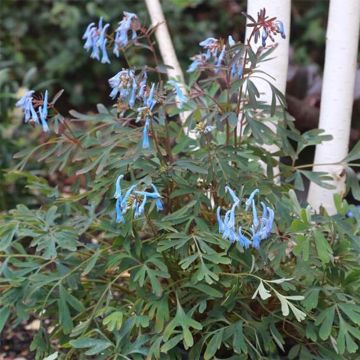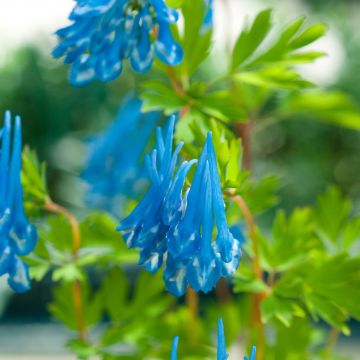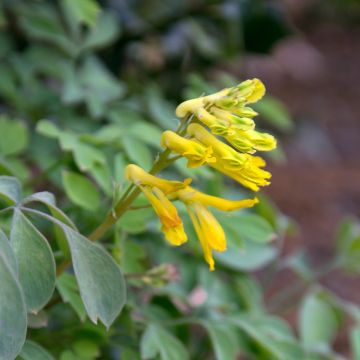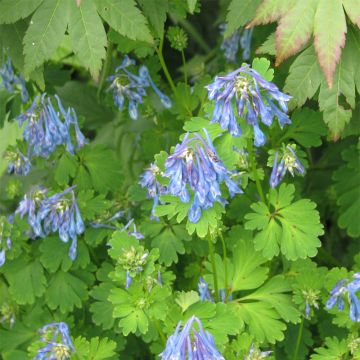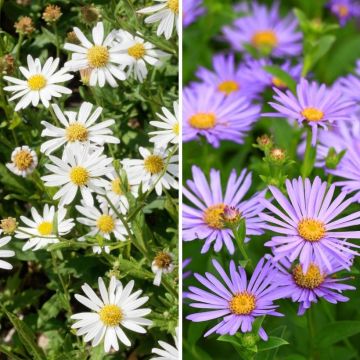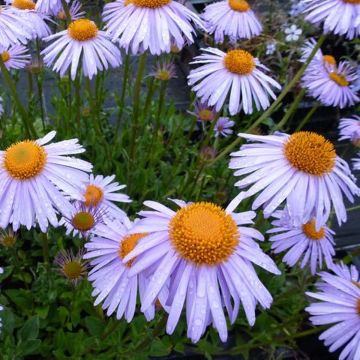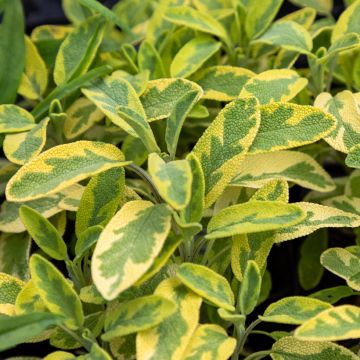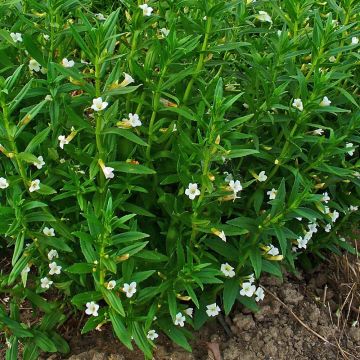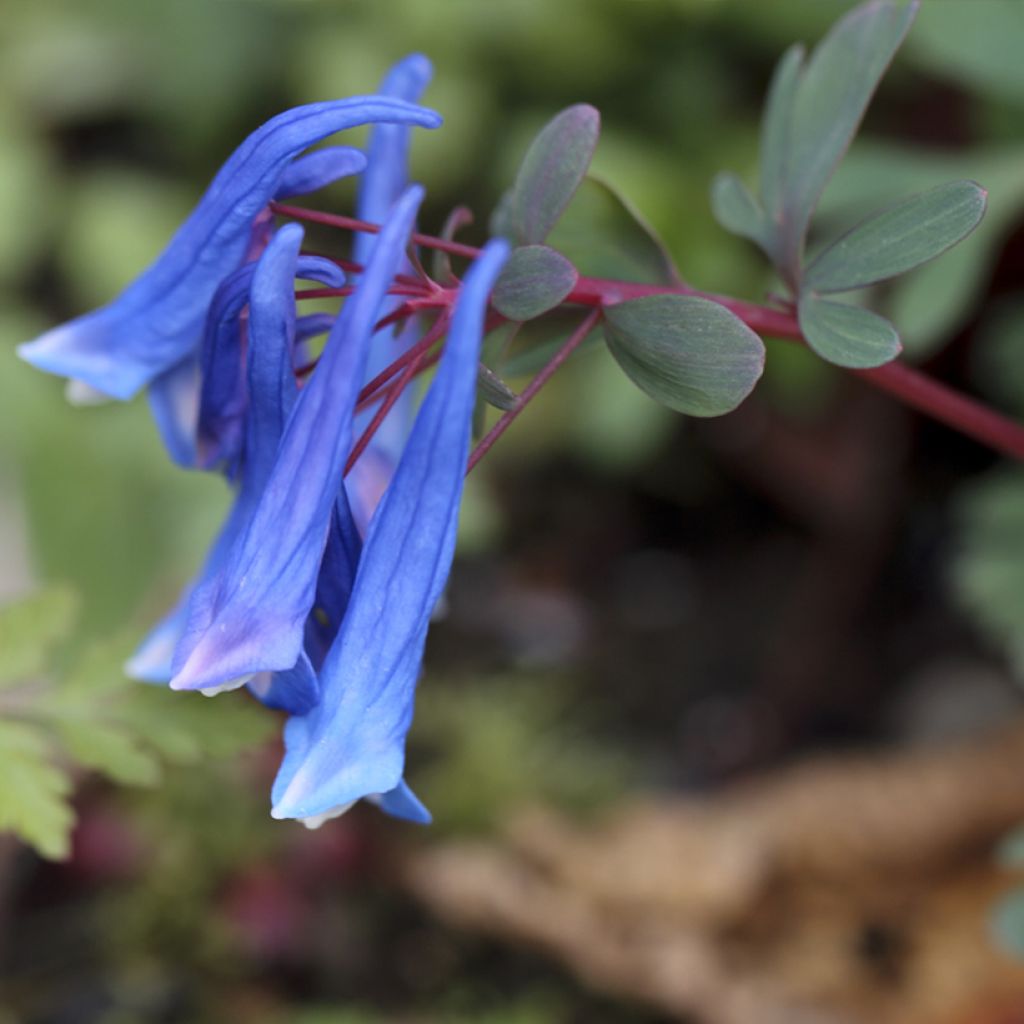

Corydalis curviflora Blue Heron
Corydalis curviflora Blue Heron
Corydalis curviflora subsp. rosthornii (var. rosthornii) Blue Heron
Special offer!
Receive a €20 voucher for any order over €90 (excluding delivery costs, credit notes, and plastic-free options)!
1- Add your favorite plants to your cart.
2- Once you have reached €90, confirm your order (you can even choose the delivery date!).
3- As soon as your order is shipped, you will receive an email containing your voucher code, valid for 3 months (90 days).
Your voucher is unique and can only be used once, for any order with a minimum value of €20, excluding delivery costs.
Can be combined with other current offers, non-divisible and non-refundable.
Home or relay delivery (depending on size and destination)
Schedule delivery date,
and select date in basket
This plant carries a 12 months recovery warranty
More information
We guarantee the quality of our plants for a full growing cycle, and will replace at our expense any plant that fails to recover under normal climatic and planting conditions.
Would this plant suit my garden?
Set up your Plantfit profile →
Description
Corydalis curviflora subsp. rosthornii 'Blue Heron' is a variety of Corydalis with an electrifying colour, gentian blue, much darker than usual blue-flowered Corydalis. Its flowers are highly fragrant. They float above bluish-green finely cut foliage, carried by red stems. This highly colourful plant blooms from April in shaded and cool areas, where its blue dazzles. In dry and hot summers, the vegetation goes into dormancy. If you have the right growing conditions, you should plant these magnificent, delicate corydalis.
'Blue Heron' Corydalis belongs to the Fumariaceae family. Its ancestor comes from the humid forests of western China. 'Blue Heron' was collected in Sichuan by Mr. Dan Hinkley. The moderately fast growth of this corydalis allows it to reach 25 cm (10in) high and 30 cm (12in) wide at maturity. It forms a compact and dense clump and can spread as ground cover thanks to its stolons. The foliage is a fairly dark green with bluish highlights and is carried on reddish stems. It is finely cut and resembles that of fumitories, bleeding hearts, ferns, or chervil. Flowering sometimes begins as early as April and ends around June or July. The flowers resemble small tubes about 2.5 cm (1in) long and have a long spur. Each flower takes on different shades of intense blue, slightly lighter to purplish, in a unique range of colours. The flowers exhale a honey scent that attracts pollinating insects. The vegetation more or less disappears in winter, depending on the climate.
The 'Blue Heron' Corydalis is a relatively easy plant to grow once you have found the right conditions for it. Plant it in partial shade with an east-facing exposure, so that it receives morning sun, or in not-too-dense shade. It needs humus-bearing, moist soil, ideally woodland soil. It doesn't mind competition from trees and bushes as long as the soil remains moist. It spreads to form colonies so will be great along a path or as a ground cover under shrubs. Choose perennials with similar requirements such as Epimediums, Ajugas, Bleeding Hearts to grow with it. It also thrives in a pot on the terrace or balcony, with regular watering.
Report an error about the product description
Flowering
Foliage
Plant habit
Botanical data
Corydalis
curviflora subsp. rosthornii (var. rosthornii)
Blue Heron
Fumariaceae - Papaveraceae
China
Other Corydalis
View all →Planting and care
Plant 'Blue Heron' Corydalis in deep, light and humus-rich, always moist, neutral to acidic soil. It will thrive in shade or partial shade, in the morning sun, under trees or bushes with which it does not compete. Clean the plant in spring to remove dead foliage.
Planting period
Intended location
Care
This item has not been reviewed yet - be the first to leave a review about it.
Similar products
Haven't found what you were looking for?
Hardiness is the lowest winter temperature a plant can endure without suffering serious damage or even dying. However, hardiness is affected by location (a sheltered area, such as a patio), protection (winter cover) and soil type (hardiness is improved by well-drained soil).

Photo Sharing Terms & Conditions
In order to encourage gardeners to interact and share their experiences, Promesse de fleurs offers various media enabling content to be uploaded onto its Site - in particular via the ‘Photo sharing’ module.
The User agrees to refrain from:
- Posting any content that is illegal, prejudicial, insulting, racist, inciteful to hatred, revisionist, contrary to public decency, that infringes on privacy or on the privacy rights of third parties, in particular the publicity rights of persons and goods, intellectual property rights, or the right to privacy.
- Submitting content on behalf of a third party;
- Impersonate the identity of a third party and/or publish any personal information about a third party;
In general, the User undertakes to refrain from any unethical behaviour.
All Content (in particular text, comments, files, images, photos, videos, creative works, etc.), which may be subject to property or intellectual property rights, image or other private rights, shall remain the property of the User, subject to the limited rights granted by the terms of the licence granted by Promesse de fleurs as stated below. Users are at liberty to publish or not to publish such Content on the Site, notably via the ‘Photo Sharing’ facility, and accept that this Content shall be made public and freely accessible, notably on the Internet.
Users further acknowledge, undertake to have ,and guarantee that they hold all necessary rights and permissions to publish such material on the Site, in particular with regard to the legislation in force pertaining to any privacy, property, intellectual property, image, or contractual rights, or rights of any other nature. By publishing such Content on the Site, Users acknowledge accepting full liability as publishers of the Content within the meaning of the law, and grant Promesse de fleurs, free of charge, an inclusive, worldwide licence for the said Content for the entire duration of its publication, including all reproduction, representation, up/downloading, displaying, performing, transmission, and storage rights.
Users also grant permission for their name to be linked to the Content and accept that this link may not always be made available.
By engaging in posting material, Users consent to their Content becoming automatically accessible on the Internet, in particular on other sites and/or blogs and/or web pages of the Promesse de fleurs site, including in particular social pages and the Promesse de fleurs catalogue.
Users may secure the removal of entrusted content free of charge by issuing a simple request via our contact form.
The flowering period indicated on our website applies to countries and regions located in USDA zone 8 (France, the United Kingdom, Ireland, the Netherlands, etc.)
It will vary according to where you live:
- In zones 9 to 10 (Italy, Spain, Greece, etc.), flowering will occur about 2 to 4 weeks earlier.
- In zones 6 to 7 (Germany, Poland, Slovenia, and lower mountainous regions), flowering will be delayed by 2 to 3 weeks.
- In zone 5 (Central Europe, Scandinavia), blooming will be delayed by 3 to 5 weeks.
In temperate climates, pruning of spring-flowering shrubs (forsythia, spireas, etc.) should be done just after flowering.
Pruning of summer-flowering shrubs (Indian Lilac, Perovskia, etc.) can be done in winter or spring.
In cold regions as well as with frost-sensitive plants, avoid pruning too early when severe frosts may still occur.
The planting period indicated on our website applies to countries and regions located in USDA zone 8 (France, United Kingdom, Ireland, Netherlands).
It will vary according to where you live:
- In Mediterranean zones (Marseille, Madrid, Milan, etc.), autumn and winter are the best planting periods.
- In continental zones (Strasbourg, Munich, Vienna, etc.), delay planting by 2 to 3 weeks in spring and bring it forward by 2 to 4 weeks in autumn.
- In mountainous regions (the Alps, Pyrenees, Carpathians, etc.), it is best to plant in late spring (May-June) or late summer (August-September).
The harvesting period indicated on our website applies to countries and regions in USDA zone 8 (France, England, Ireland, the Netherlands).
In colder areas (Scandinavia, Poland, Austria...) fruit and vegetable harvests are likely to be delayed by 3-4 weeks.
In warmer areas (Italy, Spain, Greece, etc.), harvesting will probably take place earlier, depending on weather conditions.
The sowing periods indicated on our website apply to countries and regions within USDA Zone 8 (France, UK, Ireland, Netherlands).
In colder areas (Scandinavia, Poland, Austria...), delay any outdoor sowing by 3-4 weeks, or sow under glass.
In warmer climes (Italy, Spain, Greece, etc.), bring outdoor sowing forward by a few weeks.






























